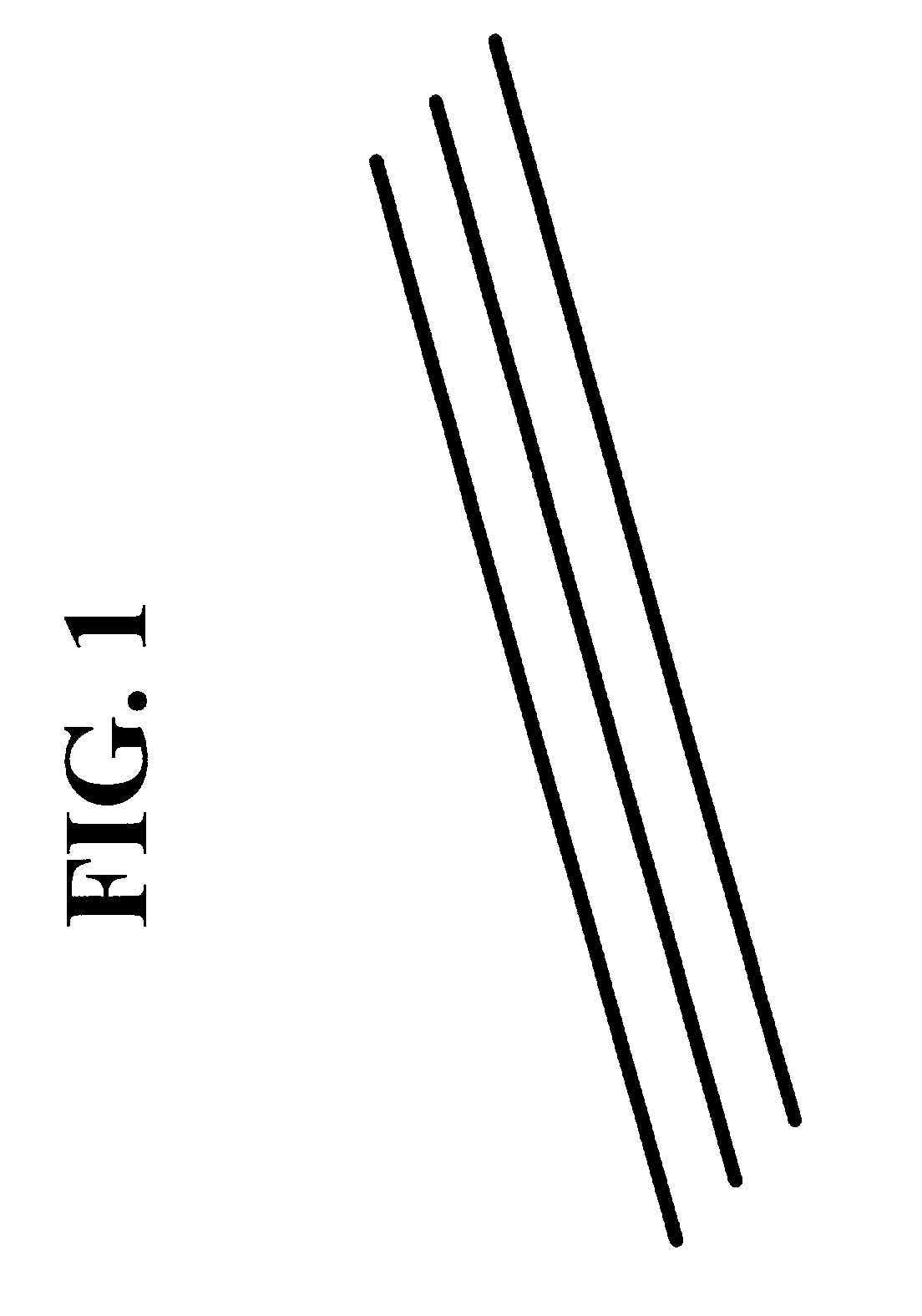Microarray channel devices produced by a block mold process
a microarray channel and mold technology, applied in the direction of nucleotide libraries, instruments, library screening, etc., can solve the problems of cumbersome dipping procedure, burdensome sorting and resorting, and insufficient array density, etc., to achieve enhanced binding, increase the surface area of the walls, and the effect of increasing the surface area
- Summary
- Abstract
- Description
- Claims
- Application Information
AI Technical Summary
Benefits of technology
Problems solved by technology
Method used
Image
Examples
example 2
Formation and Analysis of a Microarray
[0152] Antibodies are purified by affinity chromatography by reversible binding to the respective immobilized antigens.
[0153] Glass fibers are aligned in parallel fashion and embedded in a methyl methacrylate monomer or prepolymer block of PMMA. After polymerization, the glass fibers are dissolved by soaking the block in hydrofluoric acid. After dissolution, centrifugation to remove the dissolved glass and drying, the channels are treated with a solution of polyglycidyl methacrylate and a small amount of crosslinker (e.g., polycarboxylic acid). Subsequently, these reagents are removed by centrifugation, leaving epoxy groups exposed on the PMMA channel surfaces.
[0154] Antibodies directed against human serum albumin (HSA), transferrin (Tf) and haptoglobin (Hp) are used. A total of three antibody sera are used in tests with: 1) rabbit anti-HSA, 2) rabbit anti-human Tf and rabbit anti-human Hp and 3) mixed anti-HSA, Tf and Hp.
[0155] Aliquots of each...
example 3
Formation and Analysis of a Microarray
PUM
| Property | Measurement | Unit |
|---|---|---|
| thick | aaaaa | aaaaa |
| thickness | aaaaa | aaaaa |
| diameter | aaaaa | aaaaa |
Abstract
Description
Claims
Application Information
 Login to View More
Login to View More - R&D
- Intellectual Property
- Life Sciences
- Materials
- Tech Scout
- Unparalleled Data Quality
- Higher Quality Content
- 60% Fewer Hallucinations
Browse by: Latest US Patents, China's latest patents, Technical Efficacy Thesaurus, Application Domain, Technology Topic, Popular Technical Reports.
© 2025 PatSnap. All rights reserved.Legal|Privacy policy|Modern Slavery Act Transparency Statement|Sitemap|About US| Contact US: help@patsnap.com



